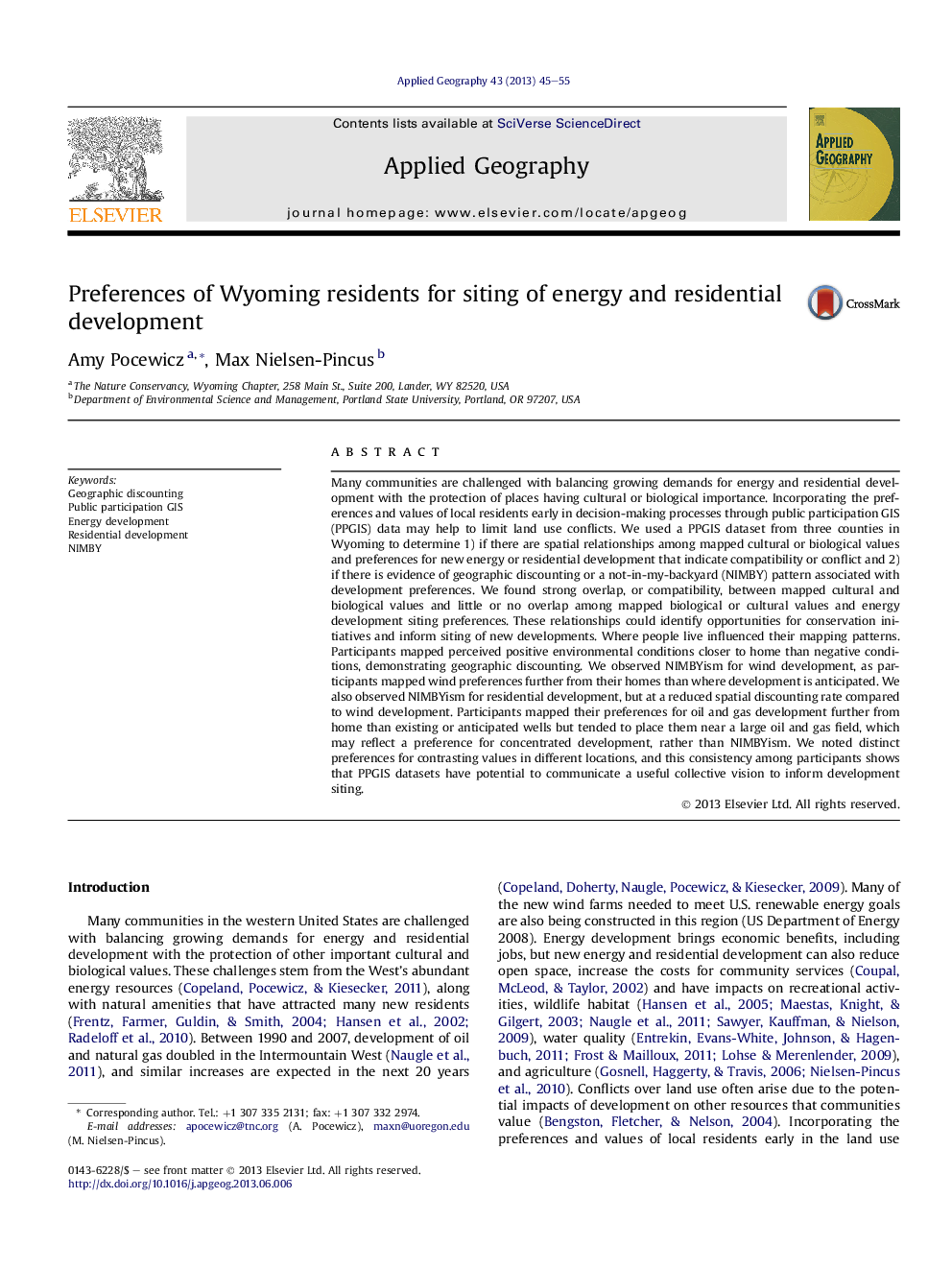| کد مقاله | کد نشریه | سال انتشار | مقاله انگلیسی | نسخه تمام متن |
|---|---|---|---|---|
| 6538845 | 158731 | 2013 | 11 صفحه PDF | دانلود رایگان |
عنوان انگلیسی مقاله ISI
Preferences of Wyoming residents for siting of energy and residential development
ترجمه فارسی عنوان
ترجیحات ساکنان وایومینگ برای قرار دادن انرژی و توسعه مسکونی
دانلود مقاله + سفارش ترجمه
دانلود مقاله ISI انگلیسی
رایگان برای ایرانیان
کلمات کلیدی
موضوعات مرتبط
علوم زیستی و بیوفناوری
علوم کشاورزی و بیولوژیک
جنگلداری
چکیده انگلیسی
Many communities are challenged with balancing growing demands for energy and residential development with the protection of places having cultural or biological importance. Incorporating the preferences and values of local residents early in decision-making processes through public participation GIS (PPGIS) data may help to limit land use conflicts. We used a PPGIS dataset from three counties in Wyoming to determine 1) if there are spatial relationships among mapped cultural or biological values and preferences for new energy or residential development that indicate compatibility or conflict and 2) if there is evidence of geographic discounting or a not-in-my-backyard (NIMBY) pattern associated with development preferences. We found strong overlap, or compatibility, between mapped cultural and biological values and little or no overlap among mapped biological or cultural values and energy development siting preferences. These relationships could identify opportunities for conservation initiatives and inform siting of new developments. Where people live influenced their mapping patterns. Participants mapped perceived positive environmental conditions closer to home than negative conditions, demonstrating geographic discounting. We observed NIMBYism for wind development, as participants mapped wind preferences further from their homes than where development is anticipated. We also observed NIMBYism for residential development, but at a reduced spatial discounting rate compared to wind development. Participants mapped their preferences for oil and gas development further from home than existing or anticipated wells but tended to place them near a large oil and gas field, which may reflect a preference for concentrated development, rather than NIMBYism. We noted distinct preferences for contrasting values in different locations, and this consistency among participants shows that PPGIS datasets have potential to communicate a useful collective vision to inform development siting.
ناشر
Database: Elsevier - ScienceDirect (ساینس دایرکت)
Journal: Applied Geography - Volume 43, September 2013, Pages 45-55
Journal: Applied Geography - Volume 43, September 2013, Pages 45-55
نویسندگان
Amy Pocewicz, Max Nielsen-Pincus,
